Past Fellows
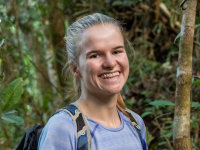
Camille DeSisto
Duke University (North Carolina)
Lemur-mediated restoration to advance biocultural sustainability in northeast Madagascar
Widespread environmental change is altering plant and animal populations throughout tropical forests. Such disturbances change patterns in animal seed dispersal— how fruit-eating animals spread seeds throughout landscapes. Although often overlooked in landscape restoration, animal seed dispersal can be important for conserving healthy ecosystems and ensuring sustainable access to resources for local communities. The effects of seed dispersal and, consequently, its reduction on plant populations in tropical forests depend on if a dispersed seed can successfully germinate, grow, and survive. Here, I propose to experimentally assess the effects of seed dispersal by lemurs— a highly-endangered primate taxa found only on Madagascar— on plant germination, growth, and survival in a human-modified landscape in northeastern Madagascar. I work in a collaborative team and take a biocultural approach to science by integrating both ecosystem health and human well-being. We propose to build on two previous years of data collection to examine if and how lemur seed dispersal contributes to landscape restoration. Specifically, we will 1) measure how lemur seed dispersal affects the germination, growth, and survival of different forest plant species, 2) determine the most effective locations for local restoration, and 3) identify priority plant species for habitat restoration (i.e., plants with greatest growth and survival rates, as well as plants that are important to and commonly used by local communities). Conserving and restoring key seed dispersal interactions in Madagascar may advance the well-being of both forest ecosystems and human well-being.

Lauren Nerfa
University of Hawaiʻi at Mānoa
Human dimensions and ecological outcomes of long-term forest restoration in Hawaiʻi
Forests are of critical importance to society for many reasons, providing regulation of climatic patterns, erosion control, products such as building materials, access to culturally important resources such as foods and medicines, and conferring health benefits such as stress reduction. Yet loss and degradation of forests is widespread, which is a critical issue facing Pacific Islands such as Hawaiʻi. In recent years, many efforts have been undertaken to restore forests and nearby ecosystems by local governments, non-governmental organizations, and community groups. Yet the outcomes of these restoration efforts remain largely unknown due to lack of resources for scientists to monitor the characteristics of restored forests. Additionally, including human dimensions in restoration (social, cultural, community benefits) can ensure lasting success of projects, but little is known about the ways that these dimensions impact restoration outcomes. In the proposed research project, I will partner with one organization in Oʻahu, Hawaiʻi to investigate the ecological outcomes of long-term forest restoration projects using indicators that are valuable for the organization, such as plant diversity, species survival, and forest structure. I will also conduct interviews with leaders of the restoration efforts to understand the local community benefits, cultural importance of plant species, and community well-being aspects of their efforts. Together the results can provide insights on how local policy makers can best support these important restoration initiatives.
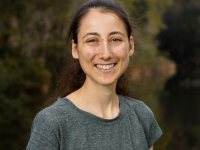
Lydia Soifer
University of Florida (Florida)
Unraveling the impact of microclimates on the biogeography of epiphytes in Panama
Climate change may threaten epiphytes, which are plants that live non-parasitically on trees such as some species of orchids, bromeliads, and ferns. However, these predictions generally depend on maps of current and future climates that may not represent the climatic conditions that epiphytes experience due to their coarse spatial scale. In tropical rainforests, microclimate variation from the understory to the upper canopy and across elevations influences where different epiphyte species occur. For example, shadier, cooler, and wetter microhabitats in the inner canopy contain different epiphyte species than sunnier, hotter, and drier microhabitats in the outer canopy. Yet, we do not have a good understanding of how these microclimates may influence vulnerability of epiphytes to climate change. I therefore propose to examine impacts of microclimates on epiphytes under current and future climate conditions across a mountain slope in Cerro Chucanti Reserve in the Darien Province of Panama to improve predictions of climate change impacts. To do so, I will monitor microclimate variation in the forest canopy across elevations, predict future microclimates based on these measurements, and examine how microclimates influence epiphyte distributions across the mountain slope. The results of the research will improve our understanding of the mechanisms driving patterns of epiphyte diversity and how climate change may impact epiphyte communities in the future.

N. Miller
Lehigh University (Pennsylvania)
Exploring the interactions between canopy gaps and invasive plant communities in northeastern hardwood forests
This study looks at how invasive plants affect the lower layer of deciduous forests, the area beneath the main tree canopy. Invasive plants are plants that have been introduced to an ecosystem where they don’t naturally occur, which out-compete and harm the native species when left unchecked. We want to understand how these invasive species spread within a forest. We ask: How do gaps in tree cover affect the ability of invasive species to establish and spread in a healthy forest? How does the variety of plants in the understory change over time in these gaps when invasive species are present? Does the proportion of shrubs, vines, and non-woody plants change when a canopy gap becomes invaded? To find out, we plan to observe and record the variety of small plants like shrubs, herbs, and vines in different openings in Allegheny National Forest. We'll look at gaps of various ages to capture the progress of succession– the process through which an ecosystem recovers from a disturbance. This study aims to answer an important question that hasn't been explored much: How do the smaller plants in deciduous forests react when there are more disturbances (like gaps in the trees) and more invasive species? Our findings will help us understand: 1) how the community of plants within a forest changes as more invasive species establish, 2) how the time since a disturbance influences how many invasive species are present, and 3) where invasive species are the most concentrated within a forest gap.

Richard Hull
Indiana University (Indiana)
Identifying Changes in the Wabash River’s Vascular Plant Flora
Vascular plants are one of the most important organism groups on Earth. There are over 340,000 species worldwide, which collectively provide food and habitat to all terrestrial animals. Despite their importance, vascular plants are under threat from two intensifying human-caused forces: Non-native species and climate change. Furthermore, how these two stressors have impacted the distributions of vascular plant species in the United States since the early 1900’s is largely unknown. Here I outline a study that is documenting the current flora of the lower Indiana Wabash River corridor in order to determine how it has changed since it was last documented by Charles and Stella Deam from 1896–1952. The findings from this analysis will be used to construct predictions of the region’s rare flora for the years 2050 and 2080 under two different forecasted climate scenarios. This data, in combination with current updates on rare and non-native species in this region, will be used to generate a conservation plan for the region’s native flora that will be shared with the Indiana Plant Conservation Alliance, the Indiana Department of Natural Resources, and several Indiana land trusts. Overall, this study will inform and prepare these organizations for the effects that exotic species and climate change will have on the Indiana flora, while also demonstrating past responses these forces have had on the native flora in order to better predict native species’ future distributions and conservation needs.

Cassandra Ziegler
Duquesne University
Evaluating the impact of ecological forestry gaps on avian diet composition in western Pennsylvania forests
Although logging is often perceived as damaging to forests, it can be an important tool that proactively improves species diversity and age structure. Because of this misconception, there is a greater need for outreach and education to understand the value of ecological forestry. In western Pennsylvania, the Foundation for Sustainable Forests (FSF) manages forests by removing unfavorable trees to create small ecological forestry gaps (EFGs), which in turn can provide a diversity of habitat and food resources for a variety of wildlife, including many birds. Bird populations have been declining since 1970, largely due to habitat loss. In a collaboration between the FSF, the National Aviary, and Duquesne University we examine the impact of these EFGs on the diet of migratory song birds by using cutting-edge methods to identify specific plant and insect DNA from fecal samples of birds banded in these EFGs from this past summer. This year we will compare the diets of Wood Thrush to the closely related Veery, both of which have been declining over the past 50 years and utilize these forests gaps. It is common for non-native plant species, typically viewed as problematic, to colonize disturbed areas but may produce fruits and host insects that are an important as native species in supporting newly fledged birds preparing for autumn migration. This study will help further bird conservation efforts and aid in forest recovery, especially the 1,500 acres of Pennsylvanian forests have been cleared for Marcellus Shale gas extraction activities.
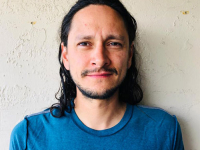
Manuel Bernal Escobar
University of Miami
Botany in Action funded fieldwork (2023): Exploring Endemism through a Permanent Forest Dynamics Plot at the Sierra Nevada de Santa Marta, Colombia
The montane forest of Sierra Nevada de Santa Marta, Colombia, is naturally isolated from other mountainous areas such as the Andes, which causes it to be biologically unique. There are many species of birds and frogs that are found nowhere else. Despite this, there is still a lack of knowledge about the trees of the Sierra Nevada, and it is possible that there are undiscovered tree species and recorded species that have never been observed in the region. To begin to fill in this gap in botanical knowledge, we will establish a permanent 1-hectare (100x100 m) forest plot in a patch of undisturbed forest around 2300 m above sea level (asl). Inside the plot, we will tag, measure, map, and identify every tree above 10 cm diameter at breast height. Given the scarcity of sampling plots in the area (none above 1000 m asl) and the high rates of endemism, we expect to expand on currently known species ranges and to find species new to science. All the samples will be sent to the Cartagena Botanical Garden Herbarium. Then, the samples will be dried, preserved, identified, mounted, and accessioned into their permanent collection, which works like a searchable library of plant specimens. Later, through comparing our samples with other vouchers and consulting with experts, we will determine the correct species identifications of all the individuals in the plot. Thus, we will be able to better assess the endemism of trees in the Sierra Nevada de Santa Marta flora.

James S. Barnes
University of Virginia
Botany in Action funded fieldwork (2023): Attention in the Schoolyard Garden: Pop-up Plant Biodiversity and its Effect on Student Mental Health
This research seeks to provide meaningful insight into the design and impact of nature-rich schoolyards on child mental health. Nature supports mental health in many ways including lowering stress and restoring attention. However, most U.S. children attend public schools and may not have regular access to nature-rich outdoor learning environments. For example, just 26% of U.S. public elementary schools have a school garden program based on most recent data (Turner et al., 2014). The need for these spaces is even more acute owing to the educational, safety, and mental health challenges that were exposed by COVID-19 and the fact that American childhood is ever more digital and indoors. Yet not all nature is the same. How does a pristine forest, an overflowing garden, or a monoculture lawn differ in their influence on student mental health, for example? Using pop-up garden biodiversity interventions – essentially plants in modular planters – this research project explores this question. The mental health focus is children’s attention – a critical aspect of learning and a growing educational challenge with increased rates of attention-related disorders. For the experiment, some students will attend class in an outdoor classroom surrounded by biodiversity pop-ups, and others without. These pop-ups will be tested at Keister Elementary, a Title 1 school in central Virginia. Keister is the pilot location for a district-wide series of outdoor learning environment improvements. This research could thus inform future improvements at seven other schools in the district and be a model for other school districts.
_Iriart_headshot_web_200_150_s_c1.jpg)
Veronica (Vero) Iriart
University of Pittsburgh (Pennsylvania)
Botany in Action funded fieldwork (2022): Will Herbicide Pollution Cost Plants Their Mutualisms with Pollinators and Soil Bacteria?
In 1962, scientist Rachel Carson from Pittsburgh sounded the alarm for greater environmental responsibility through her book Silent Spring. What followed was revolutionary change in the law, most famously the ban of the pesticide DDT which was inadvertently decimating bird populations across the country. Despite these achievements, chemical pollution from pesticides is still a significant environmental concern today. In particular, herbicide drift, which occurs when herbicide particles are taken up by the wind unto nontarget areas, is on the rise due to the increasing popularity of potent yet drift-prone herbicides. My previous work and that of others has shown that herbicide drift exposure can disrupt mutualisms (ecological interactions in which both species benefit), especially those between wild plant, pollinator (mainly bees), and beneficial bacteria species. However, the long-term consequences of herbicide drift pollution are unknown, such as whether it could cause these mutualisms to ultimately breakdown over the course of evolution. This year, my research will use a combination of greenhouse and field studies at the University of Pittsburgh, Oakland Campus and the Hilltop Urban Farm in the St. Clair neighborhood of Pittsburgh to confront the challenge of predicting evolutionary outcomes of herbicide pollution on the plant-pollinator and plant-bacteria mutualism, which together produce one-third of all food outputs and improve soil quality worldwide. As a result, this research will provide important insights into the threats facing natural systems upon which we all depend, and thereby help support their conservation.
Research Advisor: Dr. Tia-Lynn Ashman, Distinguished Professor, University of Pittsburgh
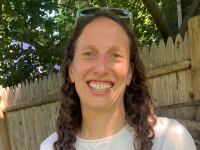
Sarah Klionsky
University of Connecticut (Connecticut)
Botany in Action funded fieldwork (2022): Influence of Plant Community Traits and Microtopography on Nitrogen Removal in Restored Wetlands on Former Cranberry Bogs
Rivers transport nitrogen from human activities, such as fertilizer use, wastewater disposal, and burning fossil fuels, to coastal estuaries where it causes changes to the environment and negatively impacts aquatic organisms. Many municipalities are looking for “nature-based solutions” to help remove nitrogen from watersheds before it reaches the coast. Wetlands have the potential to remove a lot of nitrogen from river systems, because saturated conditions are necessary for an essential step of the process, denitrification, to occur. Restoring wetlands on former agricultural land is a strategy for increasing the amount of wetland area in a watershed. The restored wetlands that I will study are retired cranberry farms, or bogs, in southern New England that have been actively restored to re-establish wetland conditions. Plants play an important role in creating conditions favorable to denitrification. Wetlands often have local differences in topography, called microtopography, which promote a more varied plant community and impact the conditions that are beneficial for denitrification. I will study the relationship between wetland nitrogen removal, the plant community, and microtopography by surveying plants and collecting plants and soil at different elevations for laboratory analyses. This research will both help us learn more about the factors that contribute to denitrification and inform future wetland restoration projects. I will also create a virtual field trip and related experiential activities to introduce students to plant-based ecosystem services on restored wetlands.
Research Advisor: Dr. Beth Lawrence, Assistant Professor, University of Connecticut

Haley Lewis
Northwestern University (Illionis)
Botany in Action funded fieldwork (2022):Green is the New Grey: Designing Green Infrastructure Networks to Improve Stormwater Management and Enhance Biodiversity
The US landscape has drastically shifted from natural areas with the ability to contain large storms and prevent flooding to overpopulated cities covered by impervious surfaces. This reduction in natural ground cover is associated with more frequent flood events, and as climate change continues to threaten the frequency and magnitude of storm events, it is important that we implement methods to prevent possible disasters to our existing infrastructure and ways of living. Green infrastructure integrates ecological benefits into existing built infrastructure to help mitigate potential disasters like extreme storms and subsequent flooding. Rain gardens are a type of GI that are typically engineered to divert, pool, and slowly soak incoming rain from an impervious surface such as a roof or a nearby street. In this study, we will study 9 rain gardens in the Evanston, Illinois and Pittsburgh, Pennsylvania to understand GI performance for water storage, water quality improvement, and biodiversity enhancement influenced by vegetation, soil quality, stormwater source & contaminant loading. For instance, does it matter what the plants are – or is GI performance influenced by what the plants are, how important is maintenance, and is vegetation quality and quantity influenced by soil quality and pollutant loading? We will accomplish this by surveying vegetation, analyzing soil and water samples, and equipping our rain gardens with a network of sensors to determine the water balance. Ultimately, we hope this data will be used to help create models that will be implemented in GI design plans for communities experiencing extreme flooding.
Research Advisor: Dr. Kimberly Gray, Northwestern University
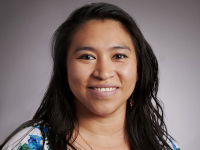
Florencia Deyanira Pech-Cárdenas
University of Minnesota (Minnesota)
Botany in Action funded fieldwork (2022): Handicraft Production Influences on Gender, Livelihoods and Natural Resources Management in Maya Communities: TEK of Chakaj (Bursera simaruba) and Forest Governance
Tourism around cultural/heritage sites has opened up opportunities for local communities to sell handicrafts worldwide. However, negative impacts such as forest deforestation and exclusion of women from full participation, are often overlooked in Indigenous communities which depend on direct extraction of natural resources to produce such handicrafts. Confronting these issues proves important for developing sustainable tourism practices, and for facilitating handicraft production based on sustainable management of the forest. In this research, I explore the social and environmental impacts of handicraft production driven by the tourism market at Chichén Itza, Yucatan, Mexico. In this research, I analyze the social and environmental impacts of handicraft production driven by heritage tourism upon livelihoods and natural resources management of Maya communities close to the World Heritage Site of Chichén Itzá in Yucatán, México. First, I will explore the ethnobotanical aspects of chakaj (Bursera simaruba), which is harvested by Maya artisans from their community forests for the wooden handicraft production. I also explore how chakaj populations in the forest are being influenced by handicraft production harvests. Second, I focus on the social effects by analyzing the motivations, challenges, and modes of organization of handicraft production from a Maya artisan perspective. Third, I explore the roles of handicraft production in indigenous women’s lives. Finally, I investigate the implications of handicraft production on forest management and communal land use policy at a local level. My project addresses urgent challenges for achieving sustainable forest management, sustainable tourism, and indigenous peoples’ autonomy.
Research Advisors: Dr. Kristen C. Nelson, Professor, H.T. Morse Distinguished Faculty, University of Minnesota, and Dr. Mike Dockry, Assistant Professor, University of Minnesota
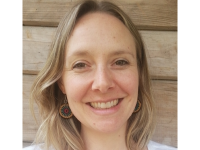
Amanda Thiel
Washington State University (Washington)
Botany in Action funded fieldwork (2022): Medical Botanical Knowledge Conservation amidst Globalizing Forces in Mayan Communities of Southern Mexico
Hawaiian sandalwood, locally known as ‘iliahi, serve many roles in native forests, from stabilizing soil, to medicinal properties, producing valuable oils, and supporting endangered bird species. ‘Iliahi also lives in harmony with native Hawaiian plants, though it has a unique relationship with its neighbors. ‘Iliahi needs to connect its roots with neighboring plants to survive; therefore, ‘iliahi need a healthy forest community to thrive. Extensive, unregulated removal of native species in Hawaiian dry forests where ‘iliahi reside, severely reduced numbers of native species, especially ‘iliahi. To effectively restore and conserve ‘iliahi, we also need to restore and conserve neighboring plants. This proposal focuses on one part of a larger project aiming to improve the survival and early growth of planted ‘iliahi seedlings by better understanding its distinctive relationship with other plants. Specifically, this project will pair ʻiliahi with four native dry forest plants. We will measure plant growth and development to determine which native plants best support ʻiliahi. We hypothesize that nitrogen use, growth rate, and fertilizer and water amounts will influence how well the native plants can support ʻiliahi. Results from this project contribute to our understanding of plants that require the support and root networks of other plants. We hope to improve active healing, forest restoration, and conservation efforts by giving Hawaiian communities confidence in establishing healthy, thriving forest communities.
Research Advisor: Dr. Marsha Bogar Quinlan, Associate Professor, Washington State University
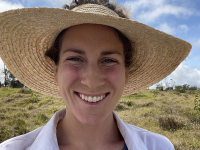
Emily C. Thyroff
University of Hawai‘i at Mānoa (Hawai‘i)
Botany in Action funded fieldwork (2022): A Key to Restoring Threatened Hawaiian Dry Forests Resides with the Endemic Santalum Species
Hawaiian sandalwood, locally known as ‘iliahi, serve many roles in native forests, from stabilizing soil, to medicinal properties, producing valuable oils, and supporting endangered bird species. ‘Iliahi also lives in harmony with native Hawaiian plants, though it has a unique relationship with its neighbors. ‘Iliahi needs to connect its roots with neighboring plants to survive; therefore, ‘iliahi need a healthy forest community to thrive. Extensive, unregulated removal of native species in Hawaiian dry forests where ‘iliahi reside, severely reduced numbers of native species, especially ‘iliahi. To effectively restore and conserve ‘iliahi, we also need to restore and conserve neighboring plants. This proposal focuses on one part of a larger project aiming to improve the survival and early growth of planted ‘iliahi seedlings by better understanding its distinctive relationship with other plants. Specifically, this project will pair ʻiliahi with four native dry forest plants. We will measure plant growth and development to determine which native plants best support ʻiliahi. We hypothesize that nitrogen use, growth rate, and fertilizer and water amounts will influence how well the native plants can support ʻiliahi. Results from this project contribute to our understanding of plants that require the support and root networks of other plants. We hope to improve active healing, forest restoration, and conservation efforts by giving Hawaiian communities confidence in establishing healthy, thriving forest communities.
Research Advisor: Dr. Travis W. Idol, Professor of Tropical Forestry and Agroforestry, University of Hawai‘i Mānoa
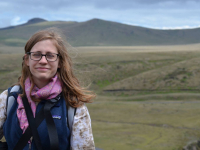
Alexa S. Wagner
Case Western Reserve University (Ohio)
Botany in Action funded fieldwork (2022): Understanding the Impacts of Forest Restoration on Demographic Shifts in the Understory Plant Community
The abandonment of agricultural lands is common in the United States. As forests regenerate on these degraded landscapes, the resultant forests tend to have fewer species and trees that grow more slowly than do old-growth forests. In part, these changes are driven by invasive species, originating from other parts of the world and establishing in these new-growth forests. These novel species can suppress or displace the native plants important for ecosystem health and functioning. In these new forests, trees tend to establish at the same time and mature at similar rates, creating dense, evenly-aged stands in contrast to original old-growth forests which have greater diversity of mixed-age native plants. To restore the historic integrity of these forests, forest managers implement removal of invasive plants while thinning dense tree stands through timbering. However, we lack a full understanding of how these efforts impact the health and diversity of these restored forests. My research explores how proper forest management creates resilient forests. During my graduate studies, I am quantifying the impacts of forest management on the growth, survival, herbivory, and dispersal of native and invasive plants. This research will inform best management practices, improving our ability to manage and restore our young forests. Using my connection with the Holden Arboretum, I will use this information to help influence the forest management decisions of landowners regionally, and beyond.
Research Advisor: Dr. Katharine L. Stuble, Holden Arboretum and Case Western Reserve University
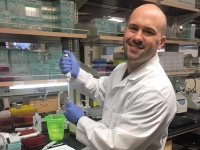
Taylor Zallek
University of Pittsburgh (Pennsylvania)
Botany in Action funded fieldwork (2022): Understanding How Community Evolution to Invasive Species Impacts Future Invasion Success
Biological invasions occur when populations of organisms are transported beyond their home range to new areas where they thrive and become successful over time. Scientists have long wondered why some organisms successfully invade while others do not. Many researchers consider the qualities that make a species good at invading, while some consider the qualities that make the communities and environments they invade good at preventing or resisting invasions by these new species. One attribute of communities that is often overlooked is how the change in genetic composition of community members over time (i.e. evolution) might help or hinder the community’s ability to resist invasion. I plan to address this by studying how populations of small floating aquatic plants called duckweed evolve in response to an invasive aquatic plant called Salvinia. First, I will expose populations of duckweed to either the presence or absence of Salvinia and allow them to grow, compete, flourish, or die for nine weeks. I will then take these same populations of duckweed and expose them to Salvinia once more to see if the prior evolution to the invader changed how these communities respond. This change will be measured by comparing the Salvinia growth within communities that have or have not evolved alongside the invader. This research will help us to better understand how could impact the conservation of aquatic plant communities and beyond.
Research Advisor: Dr. Martin Turcotte, Assistant Professor, University of Pittsburgh

Samantha Bosco
Cornell University (New York)
Botany in Action funded fieldwork (2021): Skaru:rę Food Forest Project
Sustainable agriculture research often overlooks critical social justice implications underlying the history of land dispossession and appropriated indigenous crops. This is especially true at Cornell University, a Land Grant Institution in what is today New York State (NYS). Its founding and success were only possible from the sale of stolen and forcibly ceded Indigenous lands. As a non-native PhD Candidate at Cornell University, I am addressing this in my dissertation research, which focuses on the past, present, and future of temperate nut trees and their use in temperate agroforestry, particularly in the context of nature-based climate solutions. This proposal is in support of a collaborative agroforestry project with members of the Tuscarora Nation called the “Skaru:re Food Forest”. Drawing on the emerging fields of land education, decolonial participatory action research, and Indigenous food sovereignty, this project reexamines the roles and possibilities for sustainable agriculture research programs, particularly at Land Grant Institutions, to dismantle settler-colonial notions of land and agriculture.
Research Advisor: Dr. Marvin Pritts, Professor Horticulture, Cornell University

Sarah Skubel
Rutgers, the State University of New Jersey (New Jersey)
Botany in Action funded fieldwork (2020): Natural Antimicrobials for the Post COVID Era
Bacteria and fungi have become increasingly resistant to antimicrobial drugs, creating a need for better antibiotics. Most antibiotics prescribed today, use a single compound to kill bacteria, enabling the development of bacterial resistance. Plants have co-evolved for millions of years with bacterial and fungal pathogens and developed many secondary metabolites with diverse modes of action to defend themselves from infection and hinder the development of resistance. Working together on different anti-microbial targets, these compounds can bypass resistance and remain effective for many generations. History of herbal medicine has also taught us that the most potent and effective remedies come from combining plants. Potentially synergistic compounds may, not only be present within a single plant species, but also in co-administered species. I believe that using plant combinations offers a better and more sustainable strategy to treating infections, than single antibiotic-based drugs. This project will investigate how combinations of plants work synergistically to combat microbial growth in the effort to develop a more environmentally and evolutionarily sustainable antiseptic. I hypothesize that by combining antimicrobial species, of diverse modes of action, will be more effective at targeting microbes than commercial antiseptics. Eight traditionally relevant species will be tested against six microorganisms (Four bacteria and two fungi). Lowest active concentrations and growth inhibition will be tested for each botanical species against each microbe. Such studies are key in understanding how microbes react under multiple modes of action, what potential synergies occur between plants of different species, and how natural antiseptics compare to commercial products.
Research Advisor: Dr. Ilya Raskin,Distinguished Professor, Rutgers University, and President of Global Institute for Bioexploration
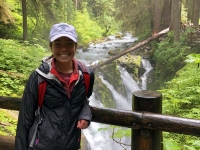
Rachel Reeb
University of Pittsburgh (Pennsylvania)
Botany in Action funded fieldwork (2020): Is Timing Everything? Using Phenology to Improve Restoration Outcomes in Invaded Landscapes
Nonnative plants are species that have been introduced by humans to a location outside of its natural range. Nonnative plants often hurt efforts to protect and restore natural areas because of their ability to displace native plants and reduce overall species diversity. In my graduate research, I study how the timing of nonnative species’ life cycle events (such as leaf-out and flowering) impact their ability to invade natural areas and compete with native plants over resources (such as light and nutrients). For example, previous studies have found that nonnative plants living in abandoned agricultural fields can flower up-to a month earlier in the growing season than native species. This may provide them with a special competitive advantage: the ability to grow and capture resources early, before native plants become active and can compete. However, we still do not fully understand whether this unique trait benefits nonnative plants, nor how it impacts the health of native plants. In my research, I have two goals. First, I will investigate the consequences of early nonnative plant invasions on native plant health. I predict that it puts native plants at a competitive disadvantage and leads to their displacement from natural areas. Second, I will investigate how life cycle timing influences the way that nonnative plants interact with one another. I predict that nonnative species with separated life cycle timing (for example, one with April flowering and another with September flowering) actually benefit from growing together, and that this promotes their invasion success.
Research Advisor: Dr. Sara Kuebbing, Assistant Professor of Invasion Ecology, University of Pittsburgh Department of Biological Sciences

Elisabeth Ward
Yale University (Connecticut)
Botany in Action funded fieldwork (2019): Impacts of Co-Occurring Plant Invaders on Soil Nutrient Availability in Managed Hardwood Forests: Implications for Ecology and Management
As the global population continues to grow, it is becoming increasingly important to integrate conservation measures with human occupancy and use of the landscape. One third of the land in the United States is forested, and the majority of this area is managed for timber extraction. Although “logging” typically connotes environmental degradation, forests can be managed to promote ecological sustainability while also increasing the economic stability of rural communities. One common barrier to sustainable forest management is the introduction and spread of plant species originating from different regions around the world. Once established, non-native invasive plants can outcompete native vegetation for resources such as light, water, and nutrients. In an effort to counter these impacts, forest managers invest significant resources into the removal of invasive plants for restoration. However, invasive plants can alter soil conditions through inputs from their roots and leaves, and these impacts may persist following their removal. My research examines whether current forest management practices that target aboveground vegetation, such as invasive plant removal, successfully restore belowground processes, or whether these management practices make ecosystems appear restored without actually improving their functions. Ultimately, the goal of ecological restoration is to attain native-dominated plant communities. However, if invasive plants alter soil processes, these changes could persist long-term and favor their re-establishment. Conservation budgets are limited, and the reinvasion of sites previously managed for invasive plants can waste precious time and resources.
Research Advisor: Dr. Mark Bradford, Professor of Soils and Ecosystem Ecology, Yale School of Forestry & Environmental Studies
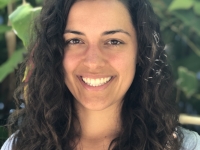
Zoe Hastings
University of Hawai'i at Mānoa (Hawai'i)
Botany in Action funded fieldwork (2019): A Participatory Functional Trait Approach to Agroforestry Design for Biocultural Restoration in Hawaiʻi
Sustaining biodiversity while meeting global resource needs is a critical challenge. This is especially true in remote Pacific Islands like Hawai‘i where over 25% of native plants are threatened or endangered, and nearly 90% of food is imported (Leung & Loke 2008). Expanding local food production and restoring native forests are highly valued culturally and ecologically, yet are challenging economically given the high cost of conservation and generally low returns on farming due to labor and land costs. Agroforests offer the potential to link ecosystem services, biodiversity protection, and agricultural production particularly on fallow agricultural lands dominated by non-native species (currently 40% of all agricultural lands in the state). The design and restoration of these multifunctional systems is a knowledge intensive process and little quantitative data exists on how plant species selection and combinations of species affect ecosystem services. We will evaluate changes in biodiversity and ecosystem services across two approaches to agroforestry establishment at a collaborative restoration site. Results of this study will improve our understanding of ecosystem service provisioning in agroforestry systems as well as inform the development of programs and policies for widespread restoration of this traditional multifunctional land use.
Research Advisor: Dr. Tamara Ticktin, Botany Department, University of Hawai’i at Manoa

Kate Douthat
Rutgers, The State University of New Jersey (New Jersey)
Botany in Action funded fieldwork (2019): Can Plants Help Each Other Compete Against Invasive Cattails?
Cattails are an aggressive type of plant that is found throughout the eastern and Midwest United States. Cattails also lower local biodiversity by forming thick stands that suppress other species. The effects of cattail colonization ripple through the food web, displacing native plant species but also affecting birds, amphibians, and pollinators. Previous efforts have failed at combatting cattail invasions. Many efforts have used a wide range of plant species to start the restoration process. Rather than using many different species, I will carefully select plant “partners” that have a proven track record of growing well together in nature. By using plants that I already know grow well together, I hope to find combinations that can out-compete cattails and limit their spread.
Research Advisor: Dr. Jean Marie Hartman, Associate Professor Ecological Design and Plant Ecology Research, Rutgers, The State University of New Jersey
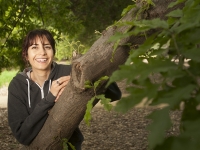
Nina Fontana
University of California-Davis (California)
Botany in Action funded fieldwork (2019): Traditional Ecological Knowledge and Ethnoecosystems in the Carpathian Mountains
Imagine rolling hills, lush blueberry bushes amidst ancient trees connecting hand-built wooden homes along forest edges. Considered the “Amazon of Europe”, the Carpathian Mountains are one of Europe’s last fully undeveloped landscapes. Over 200 rare and local plants dot this landscape and provide a source of food, medicine and livelihood for over 16 million people. For centuries, Hutsuls, an indigenous group of people, have inhabited these mountains of Ukraine. This region is facing huge ecosystem change surrounding the decline of forest health. The main threats are deforestation and disturbance due to illegal logging. This region is rich in traditional ecological knowledge (TEK), a dynamic knowledge base of careful observation and response to an ever-changing environment. This knowledge is passed down from generation to generation. For example, wild thyme can be found growing on anthills and can be used as a medicine and a spice. By exploring TEK of Carpathian Hutsuls, specifically the management and uses of wild edible plants, incredible insights can be gained to inform land stewardship policy and conservation. My project explores three questions: 1) In what ways do Hutsul communities use and care for various wild plants found in their forests? 2) How is Hutsul traditional ecological knowledge changing in response to threats like illegal logging? 3) Do the ways that Hutsuls gather plants impact plant reproduction? Information regarding wild plant use and management is non-existent in this region and is important to perpetuate sustainable harvesting practices.
Research Advisor: Dr. Beth Rose Middleton Manning, Associate Professor of Native American Studies, University of California-Davis

Toby Liss
State University of New York College of Environmental Science and Forestry (New York)
Botany in Action funded fieldwork (2019): Diversity and Evapotranspiration in Green Roof Plants: Manipulating Plant Selection to Maximize Stormwater Retention
Each year as cities grow, the areas covered by hard materials like rooftops, asphalt, and concrete grow too. These surfaces, although great for walking, driving, biking, and staying dry, are impervious – that is, they don’t allow water to soak in. Many cities have storm drains that take the stormwater from urban hard surfaces to the local rivers and lakes. Unfortunately, stormwater sometimes carries oil, gas, and other contaminants with it from the city to the local waters. When there is a large storm, the stormwater can mix with sewage and end up in your local lake or river. Green roofs are one way to help this problem. By putting soil and plants on a roof, we can slow down the rainwater or even stop it from running off at all. The plants send the water back into the atmosphere in a process called transpiration. But living on a green roof is really tough for plants! So, we need to pick species that are adapted to the dry, windy, hot conditions on roofs. But what combination of plants will remove the most water? My project goal is to study plants when they are grown in groups of mixed species and see if being in a group affects how they remove water from the soil. I want to use this knowledge to help designers make the best choices of plants when they build a green roof. Improving green roofs can mean safer, cleaner water to swim, fish, and play in for city dwellers and rural residents too!
Research Advisor: Dr. Donald J. Leopold, Department of Environmental and Forest Biology, State University of New York College of Environmental Science and Forestry
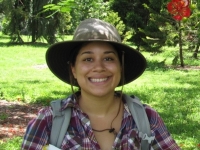
Betsabe Castro-Escobar
University of California, Berkeley (Calif.)
Botany in Action funded fieldwork (2018): On the Trail of the Calabash Trees: Understanding the Evolution, Geography, Domestication and Uses of Crescentia Species in Caribbean Islands
Plants provide us with raw materials to sustain human life. Over time, depending on how plants are used, they could be selected for particular traits that are both desirable to people and favorable for the plants success and evolution, thus promoting variation within a group of plants. The plants explored for my study are the calabash trees, also known as higüeros or güiras. Of the six species, three are from the continental Americas and three are of island origin. Of these species, five are present across the Caribbean. The plants are moderate-size trees that produce round fruits that greatly vary in shape and size, with a thin hard shell and soft white pulp. Crescentia cujete (the most widely spread) seems to be the most commonly used of all calabash trees. By conducting a multi-sited study among Caribbean islands in the Major Antilles, I aim to understand: how local people select, prepare, and consume these calabash plants; why they choose these plants and not others; how these practices might be shared or be different across the Caribbean landscape; where did these plants originate and how have they spread across the Caribbean. By studying the variation of the calabash trees in the Caribbean Basin, my interest is to understand how people have promote the evolution and conservation of these medicinal, material, and culturally significant plants.
Reasearch Advisors: Dr. Paul V. A. Fine, Department of Integrative Biology, University of California, Berkeley and Dr. Thomas J. Carlson, Department of Integrative Biology, University of California, Berkeley

Lynnaun Johnson
The Chicago Botanic Garden and Northwestern University (Illinois)
Botany in Action funded fieldwork (2018): Investigating the Phorophyte Specificity of Dendrophylax lindenii, the Ghost Orchid: Are Mycorrhizal Fungi Drivers of Rarity?
The Ghost Orchid, Dendrophylax lindenii, is one of the rarest and most famous orchids in North America. The native distribution of the Ghost Orchid is restricted to the western tip of Cuba and southern Florida. Like most North American orchids, the Ghost Orchid is threatened with extinction from urbanization, pollution and climate change. To assist efforts to conserve the Ghost Orchid, it is important to understand the interactions the Ghost Orchid has with other organisms in its native habitat. Two important relationships the Ghost Orchid has is with the trees it grows on and with fungi that support its growth. Fungi are important to Ghost Orchids because Ghost Orchids are leafless and require symbiotic fungi to supply nutrients for their growth. If the source of the fungi is the bark of its host tree, this link can explain why the Ghost Orchid prefers to grow on certain tree species. My research is investigating if the distribution of the essential symbiotic fungi drives the fine scale distribution of the orchid. To date my study has been restricted to the Florida population, but information from the Cuban population is needed to test these ideas. This study will be conducted on the only known Cuban population of Ghost Orchids which is restricted to Guanahacabibes National Park at the western tip of the island. The results will add to our understanding of the biology of epiphytic, leafless orchids and will generate recommendations for conservation of Ghost Orchids and other epiphytic orchids.
Research Advisor: Dr. Gregory M. Mueller, Chicago Botanic Garden

Sarick Matzen
University of California, Berkeley (Calif.)
Botany in Action funded fieldwork (2018): Plant-based Brownfield Remediation: Using Advanced Imaging Techniques to Determine Arsenic Uptake Mechanisms in the Hyperaccumulating Fern , Pteris vittata L.
Arsenic is not only an historic poison, but a current contaminant in city soils where urban farmers want to grow food. In keeping with sustainability ethics, urban farmers want affordable, low-waste ways to clean up soil, in contrast to expensive conventional methods where the contaminated soil is dug up and dumped elsewhere. Plants could offer a key to sustainable soil cleanup. A brake fern, Pteris vittata, pulls arsenic out of the soil and stores the toxin in its fronds. In a process called phytoextraction, we can then harvest the fronds and remove arsenic while leaving the valuable topsoil in place. However, removing arsenic with the brake fern is slow, with cleanup time estimates of several decades. To increase arsenic uptake in the fern, we must start with the soil, determining how the fern accesses the relatively insoluble arsenic. Arsenic binds strongly to iron oxide (rust) soil minerals, and must leave these mineral particles in order to enter the fern roots. How this happens is not clear, but the fern could free arsenic from soil minerals as it releases chemicals to scavenge necessary nutrients, like iron and phosphorus. With Botany in Action support, I will use innovative imaging methods, including very bright X-rays and special gels, to map this root zone chemistry and learn more about what happens when the arsenic makes the journey from the soil grains to the root interior. We can then use this information to speed up phytoextraction and clean up arsenic-contaminated soils for urban agriculture.
Research Advisor: Dr. Celine Pallud, Department of Plant and Microbial Biology, University of California, Berkeley

Nichole Tiernan
Florida International University (Florida)
Botany in Action funded fieldwork (2018): Systematics and Conservation of Endemic Caribbean Island Plumeria (Apocynaceae)
The Neotropical genus Plumeria L. (Apocynaceae), commonly known as Frangipani, is an ornamental garden plant that occurs throughout the Caribbean islands. Though several species are common in tropical gardens, many wild growing species are not present anywhere in horticulture. Resolving the confusing taxonomy of the Caribbean species of Plumeria L. will unveil wild varieties currently not in cultivation. Classification studies of threatened plants provide a framework for what and where to conserve. The Caribbean Islands are a hotspot of biodiversity and a prime focus for conservation efforts. The revised classification generated by this study will help inform conservation threats of a charismatic genus providing substantial conservation and economic significance in the Caribbean. Florida International University undergraduate interns will continue collecting data as part of an ongoing pollination study, shedding light into the breeding and pollination systems of this important ornamental genus. High school interns will work on this project as part of the highly competitive Fairchild Challenge Internship; both of these projects will provide STEM education to students pursuing careers in plant sciences.
Research Advisor: Dr. Javier Francisco-Ortega, Department of Biological Science, Florida International University
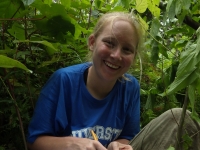
Ashley McGuigan
University of Hawaii (Hawaii)
Botany in Action funded fieldwork (2017): Agroforest resilience and contributions to nutritional diversity in Fiji
Global changes are affecting economies, cultures, and environments worldwide. Some of the adverse effects of these changes are particularity pronounced in small, isolated island ecosystems, such as those in the tropical South Pacific. Fiji is one of the most rapidly developing South Pacific island nations and is acutely impacted by global change. Historically, Fiji Islanders remained healthy by relying on their local natural resources to meet essential food, water, and cultural needs. Local governance systems, traditional practices and diverse agricultural strategies ensured these resources were sustainably managed and utilized, securing environmental health and ecological functionality. This allowed Islanders to be resilient to changes in their social and ecological environment. Many of these natural resources are obtained from agroforests, or agro-ecological systems where crops grow in tandem with trees and shrubs. Historically, Pacific agroforests have been key sources of food, medicine, and water, and conserved high levels of biodiversity. However, these systems are rapidly degraded or destroyed by social and environmental changes, which are having devastating effects on human and environmental well-being. This novel interdisciplinary plant-based research documents plant biodiversity, natural resource use and recovery, and dietary intake in Fijian agroforests after a severe cyclone to understand what role agroforests play in conserving native biodiversity and maintaining human and environmental health today. This research will help us form strategies that will help people adapt to local and global changes and secure overall health through innovative land management systems.
Research Advisor: Dr. Tamara Ticktin, Botany Department, University of Hawai’i at Manoa
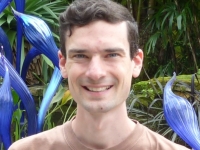
Jonathan Flickinger
Florida International University (Fla.)
Botany in Action funded fieldwork (2016 – '17): Systematics of Myrtaceae in the Caribbean Islands Biodiversity Hotspot
I study the diversity and classification of the myrtle family, a large group of trees and shrubs that includes guava, allspice, cloves and eucalypts. There are approximately 500 species of this family in the Caribbean islands, almost all of which are found nowhere else. The goal of my research is to use the information found in DNA to reconstruct the evolutionary relationships between these species as a basis for classification. In order to accomplish this goal, I am collecting plants in the Greater Antilles (Cuba, Hispaniola, Jamaica and Puerto Rico), extracting their DNA from fresh leaf tissue, analyzing the sequence data to determine relationships and relating these findings to careful studies of the characteristics of the plants. This research will provide basic information on diversity in the myrtle family that lays the groundwork for future scientific studies, identification of useful species and sustainable management in a region that is a global priority for conservation.
Research Advisor: Dr. Javier Francisco-Ortega, Professor, Department of Biological Sciences, College of Arts and Sciences, Florida International University
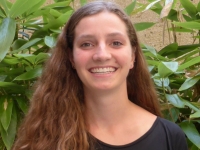
Morgan Roche
University of Tennessee (Tenn.)
Botany in Action funded fieldwork (2016): Messy Breakups of the Plant and Fungal World: Mutualism Disruption and Plant Reproductive Allocation Shifts Caused by Allelopatheic Invaders Could be a Mechanism of Native Biodiversity Decline
Normally when we think about species interacting, animals come to mind. However, plants and fungi can interact too! I am interested in how the breakdown of the relationship between fungi in the soil and plant roots impacts the reproductive ability of native plants.
Research Advisor: Dr. Susan Kalisz, Professor and Head, Department of Ecology and Evolutionary Biology, University of Tennessee, Knoxville
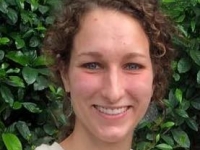
Rebecca Dalton
Duke University (N.C.)
Botany in Action funded fieldwork (2015 – ‘16): Assessing Mechanisms of Coexistence Between Two Spring Ephemerals Under a Changing Climate
My research examines the relationship between timing of life cycle events and the ability of two plant species to coexist. From 1978-1982 in Durham, N.C., two researchers studied the timing of flowering and pollinator community of two forest herbs, Claytonia virginica and Erythronium umbilicatum. This year, I am returning to their old field sites to study whether or not flowering time is earlier than it was in the past, and if C. virginica and E. umbilicatum compete for the same resources, such as light, nutrients and pollinators. In addition to studying how species coexist in N.C., I will be completing a similar study with closely related congeners, Claytonia lanceolata and Erythronium grandiflorum in Gunnison, Colo. With this information, I will be able to ask how climate change will affect species interactions across a broad geographic range.
Research advisor: Dr. William F. Morris, Professor, Biology Department, Trinity College of Arts & Sciences, Duke University
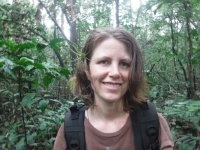
Andrea Drager
Rice University (TX)
Botany in Action funded fieldwork (2015 – ‘16): Staying Connected: How Pollination Relates to Tree Density in the Afrotropics
The incredible diversity of trees in tropical forests around the world is possible due to the high number of locally rare species that exist at low densities and rely on animal pollinators to move their pollen to the flowers of other individuals. My research aims to understand how such species compete for pollinators and achieve reproduction by examining several aspects of these pollination interactions in a highly diverse African rainforest community.
Through a combination of observations, experiments and statistical modeling involving a hyperdiverse rainforest tree community, I will: 1) assess relationships between tree density and traits associated with pollinator attraction, 2) determine how tree density relates to specialization on pollinators or pollinator types, 3) examine how pollen limitation to seed set relates to tree density, specialization and floral traits, as well as how it may be influenced by the abundance of co-flowering neighbors, and 4) construct a network of heterospecific pollen receipt for species that share pollinators, in order to better understand pollen flow in the community, as potentially relating to floral abundance, reward, richness and density. Results will contribute to our conceptual understanding of biodiversity maintenance in species-rich ecosystems and will have important implications for their management, particularly in the face of global pollinator declines and increasing forest fragmentation and degradation.
Research advisor: Dr. Amy Dunham, Assistant Professor, Department of Biosciences, Program in Ecology and Evolutionary Biology, Rice University
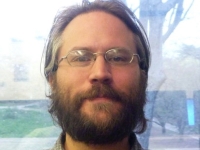
Ryan Unks
University of Georgia (Ga.)
Botany in Action funded fieldwork (2015): Kenya – An interdisciplinary analysis of sustainable landscapes in Laikipia, Kenya
Conservation initiatives in East Africa frequently focus on wildlife mobility as a key adaptation to the high variability of rainfall found in semi-arid environments. However, despite large implications for sustainability due to the tight coupling of herder livelihoods and vegetation resources, the connection between recent changes in mobility of livestock herders and recent changes in savanna vegetation is rarely a focus of research. This proposed Ph.D. dissertation research will explore the relationships of changes in plant distributions and abundances as they relate to recent changes in herding practices, using a combination of satellite image analysis and ecological field work in Laikipia, Kenya. I also plan to explore herder’s understandings of landscape-level changes in plant diversity and abundance, as well as the drivers of these changes. This synthesis of ecological and anthropological methods has promise for leading to an improved understanding of how savanna ecosystems are changing and how these changes relate to local livelihoods. It is my hope that incorporating local understandings and ecological analysis can lead to better outcomes in conservation practice. Improved understanding of the drivers and implications of landscape change is a necessary foundation for determining appropriate policies for landscape-level conservation, vegetation restoration practices, and sustainable livelihoods. Using public outreach, I will solicit local community members to review my work and results, in hopes of connecting my research to the public to collaboratively explore the nuances of ecological and livelihood changes. The practical upshot of this dialogue will then be communicated to non-governmental conservation actors.
Research advisor: Dr. Elizabeth G. King, Assistant Professor, Odum School of Ecology, Warnell School of Forestry & Natural Resources, University of Georgia
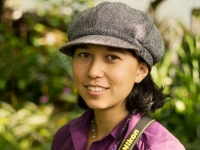
Chelsie Romulo
George Mason University (Va.)
Botany in Action funded fieldwork (2014 – ‘16): Working to Conserve and Sustainably Manage the Ecologically, Culturally and Economically Important Palm Tree Mauritia flexuosa (Aguaje) in the Peruvian Amazon
The aguaje market within the Peruvian Amazon has not been comprehensively evaluated for over 25 years, and there is no published research describing how aguaje distribution has changed over time. Using an interdisciplinary approach that couples interviews and socioeconomic data with remote sensing, I hope to understand how changes in the aguaje market have impacted aguaje distribution over time. The goal of this proposed project is to develop an understanding of the aguaje market and describe the environmental impacts of harvest as a first step toward achieving a sustainable regional management system for this important and unique ecosystem. Though aguaje could potentially be a sustainable non-timber forest product and long-term source of income for Amazonian communities, the current harvest strategy of cutting down female trees is both ecologically and economically unsustainable.
The long-term main objective of my dissertation research is the conservation and sustainable management of the aguaje palm through a regional adaptive planning effort. No regional management plans for aguaje and its threatened ecosystem currently exist in the Peruvian Amazon, which is problematic given that current harvest methods and levels are both ecologically and economically unsustainable. This plan will take a multifaceted approach and collaborative planning that includes community engagement, economic incentives and education. The complementary goals of this project are to encourage a shift to more sustainable harvest methods and secure long-term economic opportunity for rural harvester communities that will have a significant impact in conservation of species and habitats. Our long term goals are to collaborate with all stakeholder groups to identify and establish effective incentives for sustainable harvest that incorporate an understanding of the socioeconomic impacts of policy on harvesters and Amazonian communities. Our findings will be disseminated to decision makers of the government, local community organizations where the research is taking place, and with publication in scholarly journals.
Research advisors: Dr. Michael Gilmore, assistant professor of life sciences/integrative studies, New Century College, George Mason University and Dr. Francisco Dallmeier, Director, Center for Conservation Education and Sustainability at Smithsonian Conservation Biology Institute
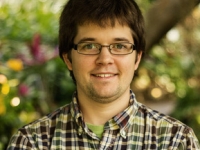
Stephen J. Murphy
The Ohio State University (Oh.)
Botany in Action funded fieldwork (2014 – ‘15): Pennsylvania – Forest landscape change in southwestern Pennsylvania
A common misconception is that forests are static entities, remaining relatively unchanged through time unless subjected to a severe disturbance such as fire or logging. In reality, forests are constantly changing as certain species increase in abundance, others decrease, and yet others remain stable over time. Taking this dynamic nature of forests into account when predicting how they will look in the future is extremely important, because changes in species composition can influence the types and values of services that these ecosystems provide. For example, changes could occur in the availability of suitable habitat for wildlife, the types of nutrient input from litter, or the types of timber that will be available for commercial purposes.
An existing series of forest plots established at Powdermill Nature Reserve offers a unique opportunity to study such changes in the forested landscape of southwestern Pennsylvania. I propose to resample a subset of these existing plots to determine how the number of species, the abundances of those species, and their overall sizes have changed over a period of six years. Because significant changes in other forests throughout the eastern United States have been documented previously, I expect that the forests of southwestern Pennsylvania will also present similar dynamism. Specifically, I expect to observe a decrease in drought-tolerant individuals and an increase in moisture-loving species. Also, because areas of the reserve are still recovering from past human land-use impacts, I expect to see an increase in the overall biomass of the forest.
Research advisor: Liza S. Comita, assistant professor, Department of Evolution, Ecology, and Organismal Biology, The Ohio State University
_200_150_s_c1.jpg)
Jessica B. Turner
West Virginia University (W.Va.)
Botany in Action funded fieldwork (2014 – ‘15): West Virginia – The root of sustainability: understanding and implementing medicinal plant conservation strategies in the face of land-use change in Appalachia
American ginseng is a valuable medicinal plant that is culturally important worldwide. Ginseng is harvested by people in Appalachia and sold on the international market. Through human activity, ginseng’s habitat is being reduced; much of this land-use change is due to surface mining. How land was used historically can influence how well a plant grows and reproduces. My research studies the relationship between ginseng and surface mining, both from the ecosystem and social science perspective. (1) Can ginseng and another medicinal plant, goldenseal, grow just as well on land that was previously surface-mined, as compared to forests with other types of land-use history? Through this reintroduction study, I will ascertain, according to how well these plants grow, if previously mined lands are lost as potential medicinal plant habitat or if people could grow medicinal plants on previously mined lands. (2) How do people in Appalachia view surface mining and ginseng conservation? Through surveys, I will learn if people in both the Appalachian and ginseng harvester communities prioritize the forest and practice conservation. I will also be able to assess if attitudes toward surface mining effects might be different if restoration of medicinal plants was possible. By researching how people think about ginseng and surface mining, I can develop environmental education based on the community’s perspective of ginseng conservation. Understanding the impacts of surface mining on the role of ginseng in the forests, as well as on the culture of Appalachia, will provide a basis for how people can conserve medicinal plants.
Research advisor: James B. McGraw, Ph.D., Eberly Professor of Biology, West Virginia University

Aurelie Jacquet
Purdue University (Ind.)
Botany in Action funded fieldwork (2014): Nepal and U.S. – Neuroprotective activities of Nepalese and Native American traditional medicines in Parkinson’s disease
The central hypothesis is that the plants used in Nepalese and Native American traditional medicines have a high potential to alleviate neuron death and changes in brain cells associated with Parkinson’s disease. We collected medicinal plants and are conducting controlled tests to determine the safety and therapeutic efficacy of the samples. We documented more than 300 uses overall, but we need to spend more time with the Lumbee people to provide a more complete overview of their medicine. Because herbal medicine is sacred and secret among people of the tribe, information about these practices is only shared after a trust relationship is established between the healer and the researcher.
Our research contributes to the United Nations’ Millennium Development Goal #1, “Eradicate poverty and hunger,” through the generation of knowledge that can initiate new discussions in the field of public health policy, and through the preservation of traditional practices.
Research advisor: Jean-Christophe Rochet, Ph.D., associate professor of medicinal chemistry and molecular pharmacology, Purdue University
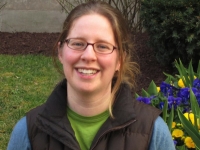
Anna Johnson
University of Maryland Baltimore County (Md.)
Botany in Action funded fieldwork (2014): Maryland – Biodiversity in the city: the interactive effects of land-use legacies and environmental gradients on the diversity of fragmented urban plant communities
While most of the global human population lives in cities, our urban ecosystems remain one of the least studied environments from the perspective of ecological science. We rely on the plants that grow in cities to provide services to the human population, such as cooling and cleaning the air and making our neighborhoods more beautiful. We know relatively little, however, about what factors are most important for creating the patterns of urban plant diversity that we observe. This project explores how history of land-use in vacant lots affects the plants that grow there today and tests a restoration strategy for increasing urban plant diversity. I previously have conducted surveys of existing plant diversity in vacant lots in Baltimore, Md. I found that, in these vacant lots, there was more variation in plant diversity within areas that were remnant backyards than within the areas of the lots where buildings previously stood. I plan to expand these results to study whether the effects of different legacies of land-use on plant diversity change predictably over time, by collecting property records and reconstructing the history of when each house was abandoned and demolished. This will result in a description of what happens to abandoned urban land in the absence of human intervention. I will also collect data from a 2-year-long field experiment that increased the diversity of native wildflowers in “weedy” plant communities. I will use what is learned from this smaller experiment to guide a similar experimental restoration plan for entire vacant lots.
Research advisor: Christopher M. Swan, Ph.D., associate professor, Department of Geography & Environmental Systems, University of Maryland Baltimore County
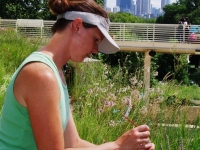
Kelly Ksiazek
Northwestern University and the Chicago Botanic Garden (Ill.)
Botany in Action funded fieldwork (2014): Illinois – The influence of seed and pollen movement on the diversity of green roof plant populations
The conversion of natural land to cities means that more plants and animals need to live alongside people. Special rooftop gardens, called green roofs, could include plant species that have lost their normal living spaces on the ground. If plants are able to live successfully on green roofs, they could provide resources like food and nesting materials to many insects and birds. However, green roofs, like other urban gardens, tend to be located far away from each other. Spaces between the roofs might not be good places for plants and animals to live, causing green roofs to function like isolated islands throughout a city. If plants on green roofs are not connected to other plant populations, inbreeding can occur between a few closely related individuals. Over time, this could mean that all individuals on a green roof were related and could share the same inability to respond to stressful situations like droughts.
If, however, green roofs received seeds and pollen from other locations, the plants could have a greater ability to adapt to changes in the environment. To date, little is known about how green roof plant populations are connected with plants in other habitats throughout cities. My research will determine which characteristics of plants allow them to get to new green roofs and will compare the movement of pollen on green roofs to a typical natural habitat. Results of this research will enable the creation of future green roofs designed to support diverse and resilient groups of plants.
Research advisor: Krissa Skogen, Ph.D., conservation scientist, Chicago Botanic Garden; adjunct professor, Northwestern University
George A. Meindl
University of Pittsburgh (Pa.)
Botany in Action funded fieldwork (2012 – ‘13): Pennsylvania and California – Assessing the potential for cascading effects of heavy metal soil pollution: plants and pollinators
Human land use has resulted in toxic levels of heavy metal soil contamination. Phytoremediation has emerged as a low-cost means to clean contaminated soils. Plants are grown on metal-contaminated soil and then removed at the end of their life cycle, taking the soil metals with them. However, because many insects feed on plant tissue, local insect populations may be harmed if they feed on metal-rich plants. George’s research seeks to determine the potential risks phytoremediation poses to insects, particularly pollinators.
Research advisor: Tia-Lynn Ashman, Ph.D., professor and associate chair, Department of Biological Sciences, University of Pittsburgh
Anita Varghese
University of Hawaii (Hawaii)
Botany in Action funded fieldwork (2011 – ‘13): India – Community-based ecological monitoring and its implications for conservation in the Nilgiri Biosphere Reserve (India)
Collection of plant products is an important livelihood activity for communities in the tropics. The rising demand for herbal products puts plants under pressure, and often this pressure goes un-assessed. Traditional knowledge of the harvesters can complement scientific knowledge; together they can provide direct insight for better conserving ecologically and culturally important medicinal plants and their habitats.
Research advisor: Tamara Ticktin, Ph.D., associate professor of botany, University of Hawaii at Manoa
Samantha Davis
Wright State University (Ohio)
Botany in Action funded fieldwork (2011 – ‘12): Ohio – The direct and indirect effects of plant invasion on a rare woodland butterfly
The invasive plant garlic mustard has been contributing to the decline of the West Virginia White butterfly, a rare woodland butterfly. Sam’s research examines how garlic mustard kills wildflowers, why the Virginia White lays its eggs on garlic mustard, how well caterpillars survive when they are eating garlic mustard, and whether garlic mustard’s invasion is pushing the West Virginia White towards extinction.
Research advisor: Don Cipollini, Ph.D., professor, Department of Biological Sciences and director, Environmental Sciences Ph.D. program, Wright State University
Vandana Krishnamurthy
University of Hawaii (Hawaii)
Botany in Action funded fieldwork (2011 – ‘12): India – Ethnobotany, trade and population dynamics of the endemic Cycas species.
Cycas circinalis and Cycas indica are two important species for adivasi (indigenous) groups in the Western Ghats of India; due to trade pressure, these plants are decreasing in the wild. Vandana’s research examines traditional knowledge of C. circinalis and C. indica harvest, biological responses of the population to harvest pressures, and market uses that steer the extensive harvest of the species.
Research advisor: Tamara Ticktin, Ph.D., associate professor of botany, University of Hawaii at Manoa
Lisa Offringa
City University of New York (N.Y.) and the New York Botanical Garden
Botany in Action funded fieldwork (2011 – ‘12): Thailand – Identifying plants used by traditional healers for treatment for dementia
The prevalence of dementia is increasing worldwide in both industrialized and developing nations. Lisa’s research examines Thai medicinal plants with the potential to slow the progression of Mild Cognitive Impairment (MCI) to dementia and to treat the memory loss. By conducting interviews with traditional doctors in northern Thailand and performing chemical analyses, Lisa was able to pinpoint a plant with positive effects on memory and brain chemistry.
Research advisor: Michael J. Balick, Ph.D., New York Botanical Garden
Sushma Shrestha
Miami University (Ohio)
Botany in Action funded fieldwork (2010 – ‘12): Nepal – Integrating community forest ecological and ethnobotanical knowledge for biodiversity conservation
Sushma’s research investigates scientific-ecological and local ethnobotanical knowledge at the Manaslu Conservation Area of Nepal (MCA). Using global localism as a research approach, she investigates how participatory “ethnoecological” mapping of landscape resources contributes to “landscape ecological” patterns of diversity, how ecological diversity relates to ethnobotanical diversity, the structure and ecological status of cultural keystone species, and how ethnobotanical and ecological research findings can contribute to adaptive collaborative management.
Research advisor: Kimberly E. Medley, Ph.D., professor, Department of Geography, Miami University
Pio Saqui
University of Florida (Fla.)
Botany in Action funded fieldwork (2009 – ‘12): Belize – Traditional Ecological Knowledge: A project to help revitalize Mopan Maya agricultural and ecological knowledge
Traditional ecological knowledge (TEK) of the Maya has been studied for its importance in human cultural survival worldwide. Pio’s research examines the ways in which the Maya culture and its traditions are transmitted through the use of “slash and burn” (Milpa) agriculture systems in order to maintain cultural practices. Through this project, Pio seeks to help revitalize traditional ecological knowledge in the Mopan Maya communities of Belize.
Research advisor: John Richard Stepp, Ph.D., associate professor of anthropology and Latin American studies, University of Florida
Vivian Zeidemann
University of Florida (Fla.)
Botany in Action funded fieldwork (2009 – ‘12): Brazil – Fostering sustainable forest-based livelihoods: the case of Brazil nut management
Traditional people in the Amazon are dependent on forest resources for their livelihoods, and the Brazil nut is the main forest species harvested. Vivian’s research examines the variation of Brazil nut quality, access, and ultimately income generation across the Riozinho do Anfrísio Extractive Reserve (RDAER) in Brazil.
Research advisor: Karen Kainer, Ph.D., associate professor of forest resources and conservation/Latin American studies, University of Florida
Alison Hale
University of Pittsburgh (Pa.)
Botany in Action funded fieldwork (2010 – ‘11): Pennsylvania – Testing a novel mechanism of forest understory invasion by garlic mustard: short- and long-term impacts
In Pennsylvania’s forests, about 70 percent of all plants rely on a cooperative relationship with a unique group of fungi (arbuscular mycorrhizal fungi) to obtain the nutrients they need to survive. Alison’s research examines how toxic chemicals produced by garlic mustard, a widespread invasive plant, disrupt this beneficial synergy and destabilize the health of our native forests.
Olyssa Starry
University of Maryland (Md.)
Botany in Action funded fieldwork (2010 – ‘11): Maryland – The role of green roof plants in urban storm water management
Green roofs offer an important solution to the problem of urban storm water management, retaining as much as 80 percent of rainwater they receive from small storms. However, not enough is known about how much water these structures retain under different environmental and planting scenarios. Through careful measurement of water in the substrate and plant, as well as changes in the condition of the plants, Olyssa’s research examines the role of three species of sedum in the rainwater retention of green roof systems.
Arika Virapongse
University of Florida (Fla.)
Botany in Action funded fieldwork (2009 – ‘11): Brazil – Impact of market opportunities on livelihood strategies, decision-making and knowledge generation among burití palm leaf users
Arika’s research explores the factors that influence how different social groups participate in forest-product markets. Her case study is the handicraft market of buriti palm fiber artisans in the Maranhão state of Brazil. Better understanding of the relationship between local livelihoods and non-timber forest resources offers insights for improving the management and conservation of forests while respecting the roles and needs of the people who use them.
Rachel Meyer, Ph.D.
City University of New York/New York Botanical Garden (N.Y.), 2012
Botany in Action funded fieldwork (2010): India and China – History of eggplant domestication
Selena A. Ahmed, Ph.D.
City University of New York/New York Botanical Garden (N.Y.), 2011
Botany in Action funded fieldwork (2008 – ‘10): China – Biodiversity of wild tea populations
Christopher Heckel, Ph.D. candidate
University of Pittsburgh (Pa.)
Botany in Action funded fieldwork (2006 – ‘09): Western Pennsylvania – Effect of deer on Jack-in-the-pulpit (Arisaema triphyllum)
Bianca Knoll, M.S.
University of California, Berkeley (Calif.), 2006
Botany in Action funded fieldwork (2006 – ‘09): Costa Rica, Bolivia and Madagascar – Ferns which clean up arsenic pollution
Cassandra Quave, Ph.D.
Florida International University (Fla.), 2008
Botany in Action funded fieldwork (2006 – ‘08): Italy – Antimicrobial plant extracts to combat drug-resistant staph
Nat Bletter, Ph.D.
City University of New York/New York Botanical Garden (N.Y.), 2006
Botany in Action funded fieldwork (2003 – ‘07): Peru and Mali – Cross-cultural medical ethnobotany
Emily Mooney, Ph.D.
West Virginia University (W.Va.), 2007
Botany in Action funded fieldwork (2004 – ‘06): Pennlyvania, New York, Maryland and West Virginia – Ethnobiology of American ginseng (Panax quinquefolia)
John Paul, Ph.D.
University of Pittsburgh (Pa.), 2008
Botany in Action-funded fieldwork (2003 – ‘06): Costa Rica – Causes of rarity in psychotria
Danica (Harbaugh) Reynaud, Ph.D.
University of California, Berkeley (Calif.), 2007
BIA-funded fieldwork (2003 – ‘06): Pacific and Australia – Ethnobotany of sandalwoods
Vicente Garcia, Ph.D.
University of California, Berkeley (Calif.), 2006
Botany in Action funded fieldwork (2004 – ‘05): Pacific, Thailand and South East Asia – Biodiversity/ethnomedicine of Piper
Christiane Ehringhaus, Ph.D.
Yale University School of Forestry, 2005
Botany in Action funded fieldwork (2003 – ‘05): Brazil – Non-timber forest products of the Amazon
Bruce Hoffman, Ph.D.
University of Hawaii (Hawaii), 2009
Botany in Action funded fieldwork (2001 – ‘05): Suriname – Traditional plant knowledge of Amerindians and Maroons
Botany in Action funded fieldwork (1995 – ‘97): Guyana – Sustainable harvest of Heteropsis flexuosa
Sarah Khan, Ph.D.
City University of New York/New York Botanical Garden (N.Y.), 2006
Botany in Action funded fieldwork (2002 – ‘05): India and China – Traditional anti-diabetic medicinal plants
Karen Crawley Kearney, Ph.D.
City University of New York/New York Botanical Garden (N.Y.), 2005
Botany in Action funded fieldwork (1998 – 2005): Mexico – Traditional plant pharmacology of Quichol women
Adam Edwards, M.S.
Florida International University (Fla.), 2004
Botany in Action funded fieldwork (2002 – ‘04): Southeastern North America – Caffeine content of Yaupon holly (Ilex vomitoria)
Michael Gilmore, Ph.D.
Miami University (Ohio), 2004
Botany in Action funded fieldwork (2001 – ’04): Peruvian Amazon – Maijuna ecology and ethnobotany
Alyssa Hanna
West Virginia University (W.Va.)
Botany in Action funded fieldwork (2001 – ‘04): Pennsylvania, Ohio and West Virginia – Impact of invasive species on American ginseng (Panax quinquefolia)
Anya Hinkle, Ph.D.
University of California, Berkeley (Calif.), 2005
Botany in Action funded fieldwork (2001 – ‘04): French Polynesia – Dispersal of introduced medicinal plants
Rachel Collins, Ph.D.
University of Pittsburgh (Pa.), 2003
Botany in Action funded fieldwork (2000 – ‘03): West Virginia and Pennsylvania – Oak forest regeneration
Lauren Raz, Ph.D.
New York University/New York Botanical Garden (N.Y.), 2004
Botany in Action funded fieldwork (2000 – ‘03): Cuba – West Indian dioscoreaceae, revision of rajania
Tiffany Knight, Ph.D.
University of Pittsburgh (Pa.), 2002
Botany in Action funded fieldwork (2002): Western Pennsylvania – Deer herbivory impact on white trillium (Trillium grandiflorum)
Stefan Schnitzer, Ph.D.
University of Pittsburgh (Pa.), 2001
Botany in Action funded fieldwork (1997 – 2001): Panama, Costa Rica and Pennsylvania – Treefall gaps’ role in forest regeneration and biodiversity maintenance
Darron Collins, Ph.D.
Tulane University (La.), 2001
Botany in Action funded fieldwork (1998 – 2000): Guatemala – Ethnobotany of the Q’eqchi’
Sylvian G. Razafimandimbison, Ph.D.
Missouri Botanical Garden (Mo.), 2000
Botany in Action funded fieldwork (1996 – ’97; 2000): Madagascar – Revision of rubiaceae
Kristine Stewart, Ph.D.
Florida International University (Fla.), 2000
Botany in Action funded fieldwork (1997 – ‘99): Cameroon – Ethnobotany of red stinkwood (Prunus africana)
Dennis J. Milanowski, Ph.D.
Washington University (Mo.), 1998
Botany in Action funded fieldwork (1996 – ‘98): Peru – Medicinal compounds of Croton section Cyclostigma
Armand Randrianasolo, Ph.D.
University of Missouri, Saint Louis/Missouri Botanical Garden (Mo.), 1998
Botany in Action funded fieldwork (1996 – ‘97): Madagascar – Rhus, micronychia, protorhus




